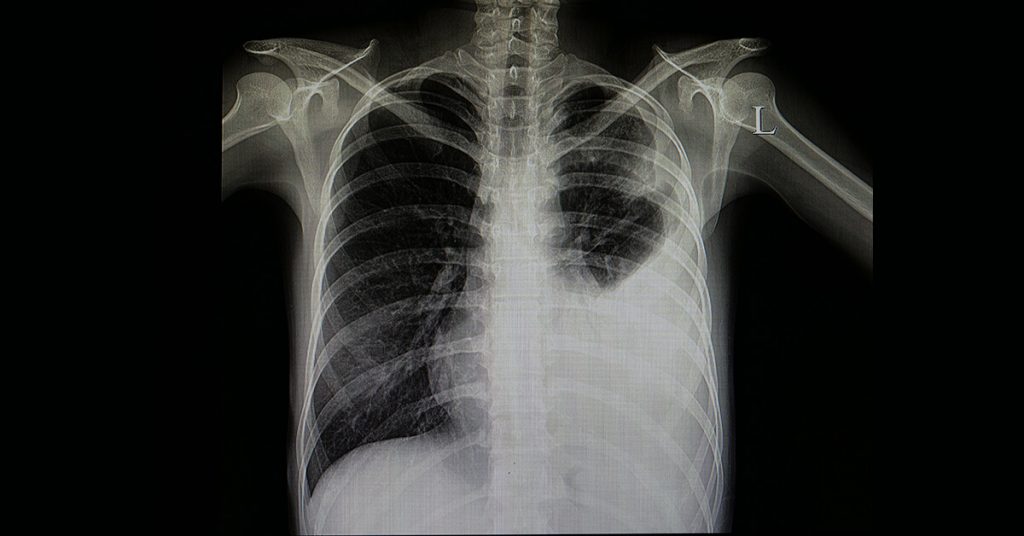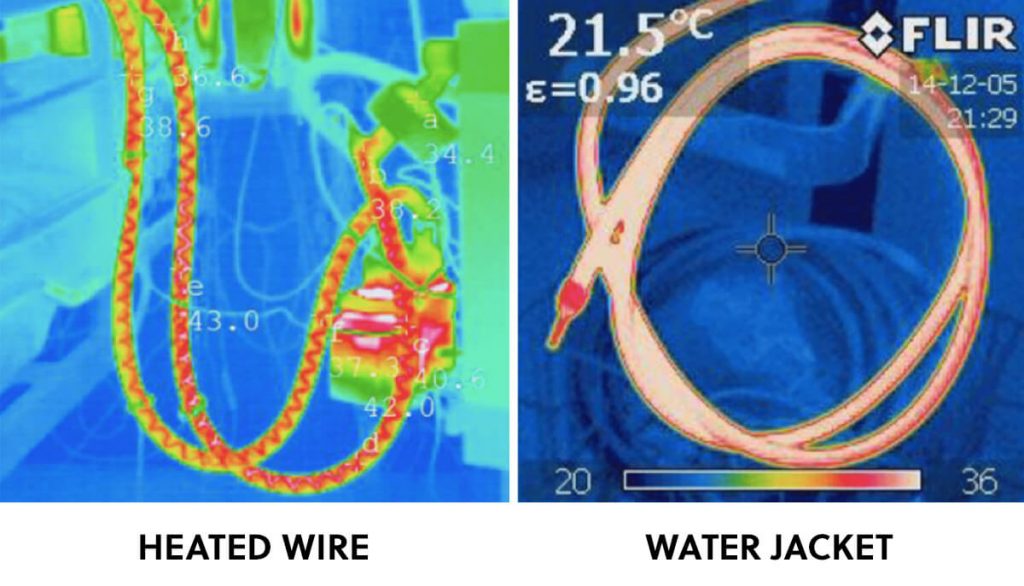Treating the Congested Patient with High Velocity Therapy

Whether it’s pneumonia, bronchiolitis, or other respiratory infections, secretion clearance is one of the keys to symptom relief. Rehydration of airway mucosa to promote mucociliary function helps with secretion clearance, and this can be effectively achieved by inhalation of heated, humidified gas.[1] High velocity nasal insufflation, delivered via high velocity therapy provides optimally conditioned gas — via a high velocity therapy cannula or a trach mask — for optimal secretion clearance.
Outcomes:

High velocity therapy is a versatile tool that not only treats undifferentiated respiratory distress, but delivers optimally conditioned gas all the way to the patient, helping the airway cilia to move mucus for removal by suctioning or coughing. The below x-ray images (Fig. 1) show an example of the effectiveness of high velocity therapy when it comes to secretion mobilization.
In this case, the patient was placed on high velocity therapy on the day of admission. The staff employed standard clinical care and did not use any additional mechanisms for secretion mobilization.
How does High Velocity Therapy achieve its effectiveness?

While there are several ways to create heated, humidified gas, rainout often makes the delivery all the way to the patient difficult. Rainout occurs when the warm gas comes into contact with a cooler surface, such as the delivery circuit, and the humidity it carries condenses into larger droplets, causing both inefficiency and discomfort for the patient.
To minimize rainout, Vapotherm® has designed a triple-lumen delivery tube where the conditioned gas is encased in a warm water jacket. Figure 2 depicts heat-mapping images showing the uniform temperature of the water jacket versus a heated wire delivery circuit. Due to this uniformity, humidification delivered via Vapotherm high velocity therapy keeps the conditioned gas energetically stable and therefore has less rainout as compared to heated wire circuits.[2]
Figure 2 also depicts that the heated water jacket delivery tube maintains a lower overall temperature, making it safe to touch. The tube feels warm and patients will not get burned even if prolonged skin contact with the delivery tube should occur.
Learn more about High Velocity Therapy
REFERENCES
[1] Williams R, Rankin N, Smith T, Galler D, Seakins P. “Relationship between the humidity and temperature of inspired gas and the function of the airway mucosa.” Critical Care Medicine. 1996 Nov;24(11):1920-9.
[2] Tero R, Cecich J, Sanabria O, et. al. Risks associated with conventional humidifiers adapted for high-flow nasal cannula therapy in human infants: results of a time and motion study. Int. J Clin Pediatr. 2014; 3(4): 99-104.